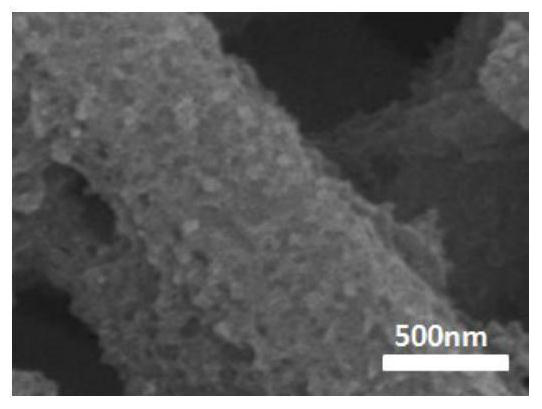Fabric with antibacterial function
A fabric and functional technology, applied in the field of textiles, can solve problems such as poor antibacterial ability of fabrics, and achieve the effects of improving dispersibility, broadening the light response range, and avoiding the reduction of active sites.
- Summary
- Abstract
- Description
- Claims
- Application Information
AI Technical Summary
Problems solved by technology
Method used
Image
Examples
Embodiment 1
[0016] (1) 0.5 mmol nitrate, 0.5 mmol of nitrate, and 7 mmol of tungstate, 7 mmol of nitrate is dissolved in 50 ml deionized water, then citric acid, hydroxypropylmethylcellulose, tungsten salt: citric acid : The mass ratio of hydroxypropylmethylcellulose is 1: 0.2: 0.2; ultrasonic mixing is uniform, heat reflow under 90 degrees Celsius conditions for 2 h, resulting in Ce-Mg co-doped tungstate;
[0017] (2) Ce-mg co-doped tungstate was dissolved in 50 ml of deionized water, followed by addition of 3 mmol of titanate tetrabutyl ester and 18 mgcTab, 80 degrees Celsius, which was heated to return to 1 h, thereby obtaining Ce-Mg co-doped tungstic acid. Bismuth load nano Tio 2 Composite of nanoparticles;
[0018] (3) Place the above composite material in the tube furnace, heat treatment for 1 h at 300 degrees Celsius, resulting in Ce-Mg co-ditting Bi 2 WO 6 -Tio 2 Composite.
PUM
 Login to View More
Login to View More Abstract
Description
Claims
Application Information
 Login to View More
Login to View More - R&D Engineer
- R&D Manager
- IP Professional
- Industry Leading Data Capabilities
- Powerful AI technology
- Patent DNA Extraction
Browse by: Latest US Patents, China's latest patents, Technical Efficacy Thesaurus, Application Domain, Technology Topic, Popular Technical Reports.
© 2024 PatSnap. All rights reserved.Legal|Privacy policy|Modern Slavery Act Transparency Statement|Sitemap|About US| Contact US: help@patsnap.com








